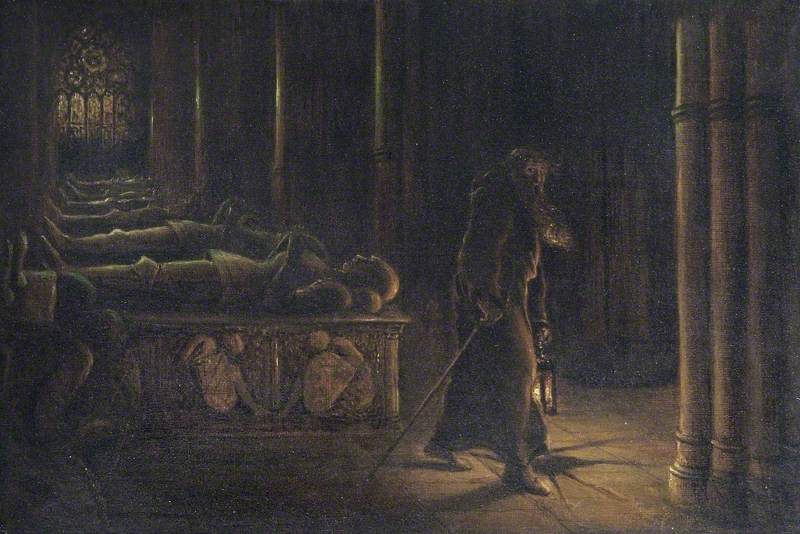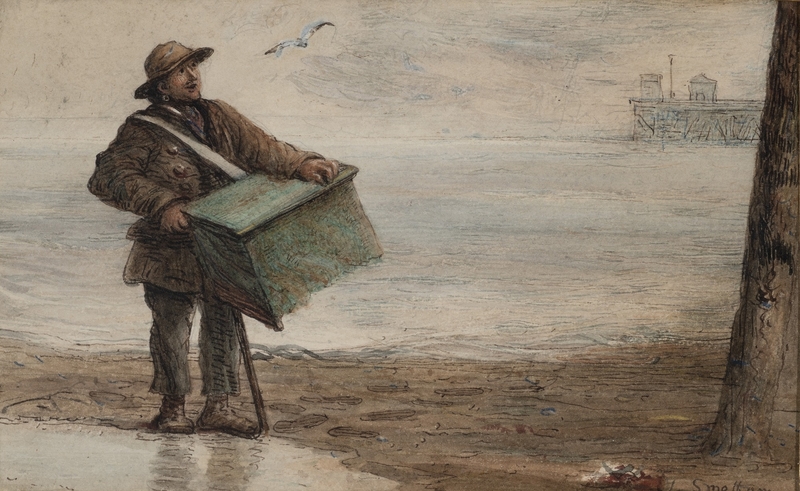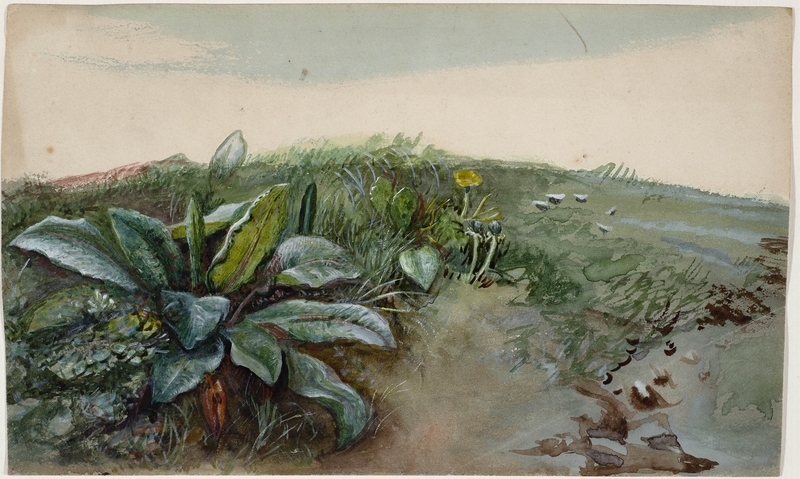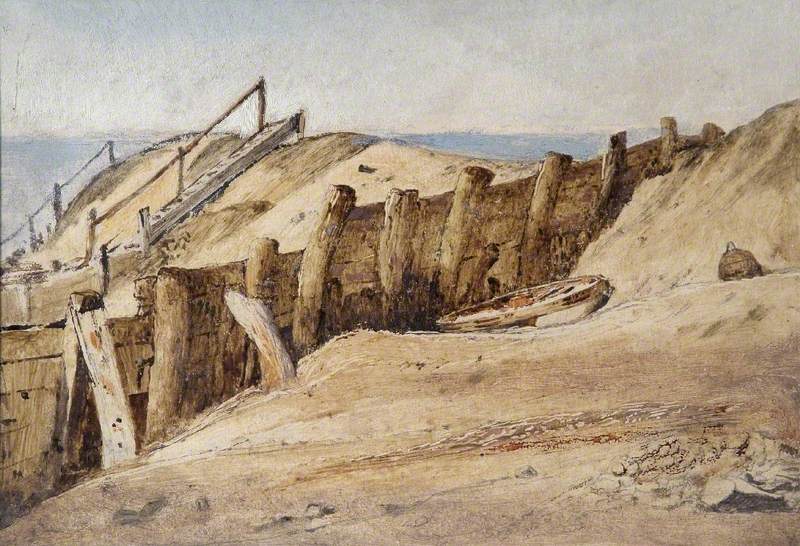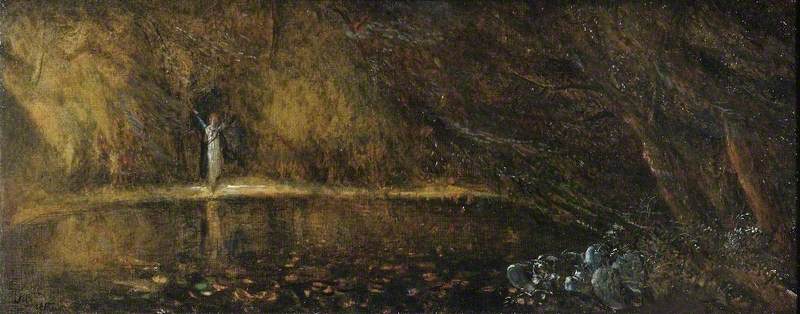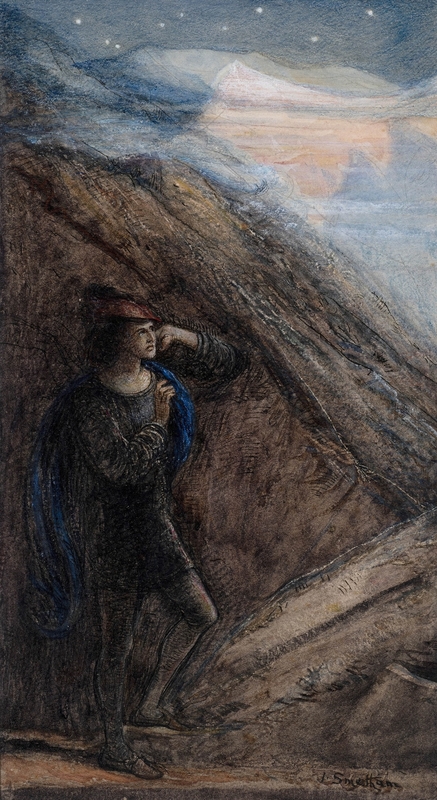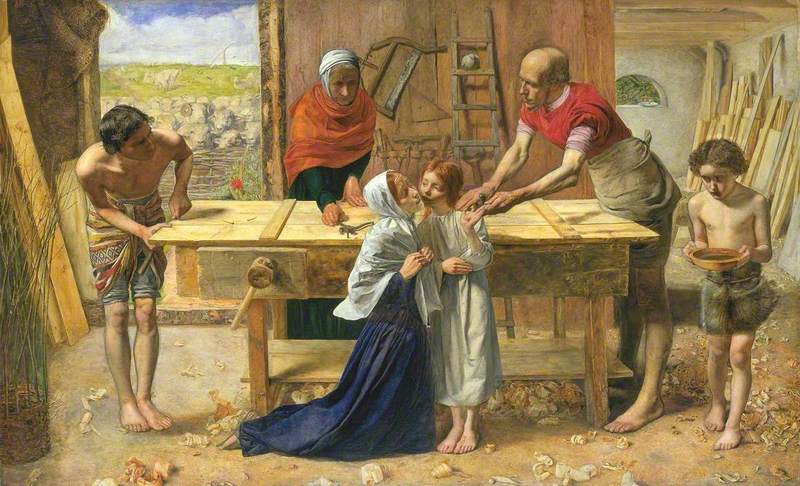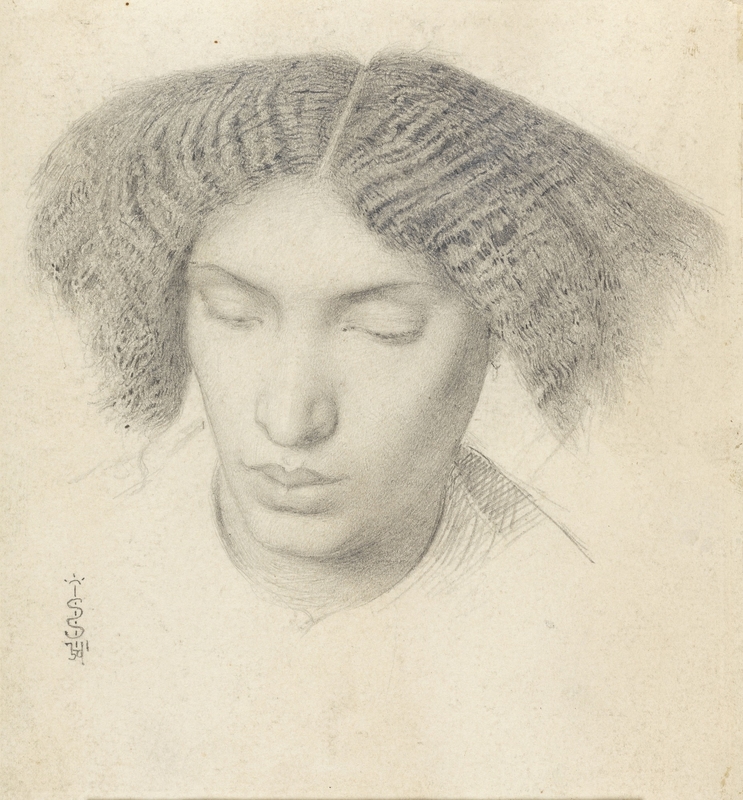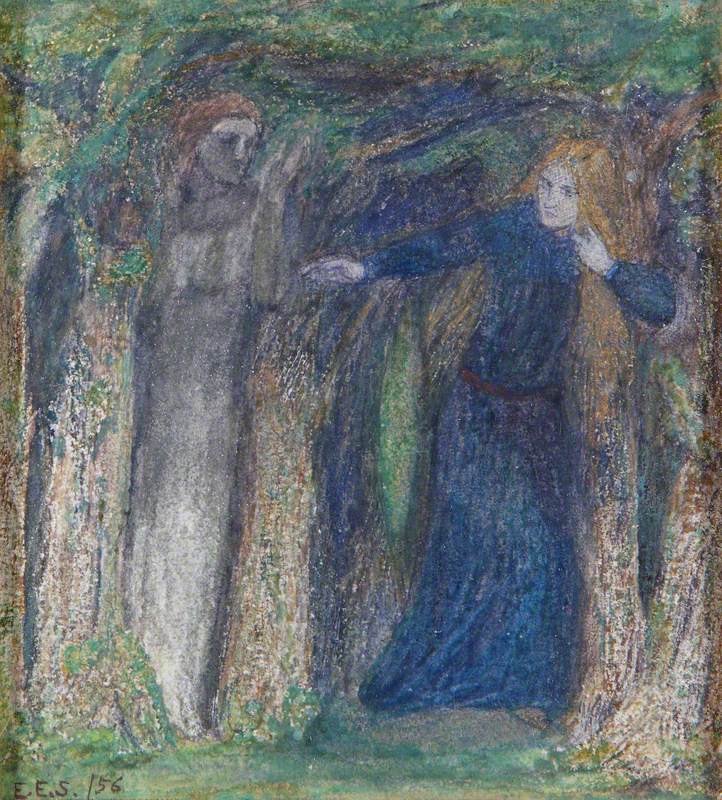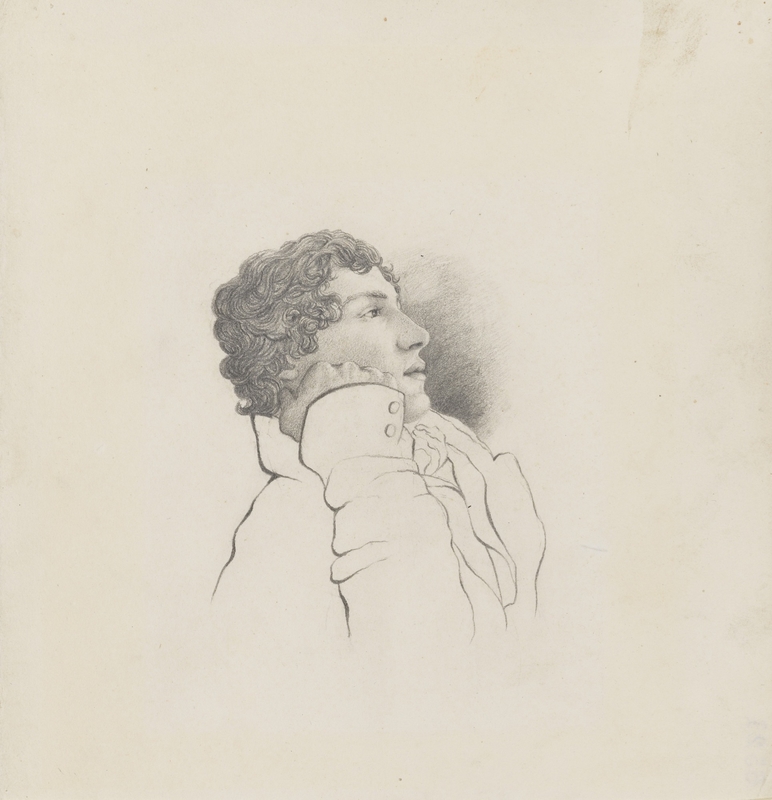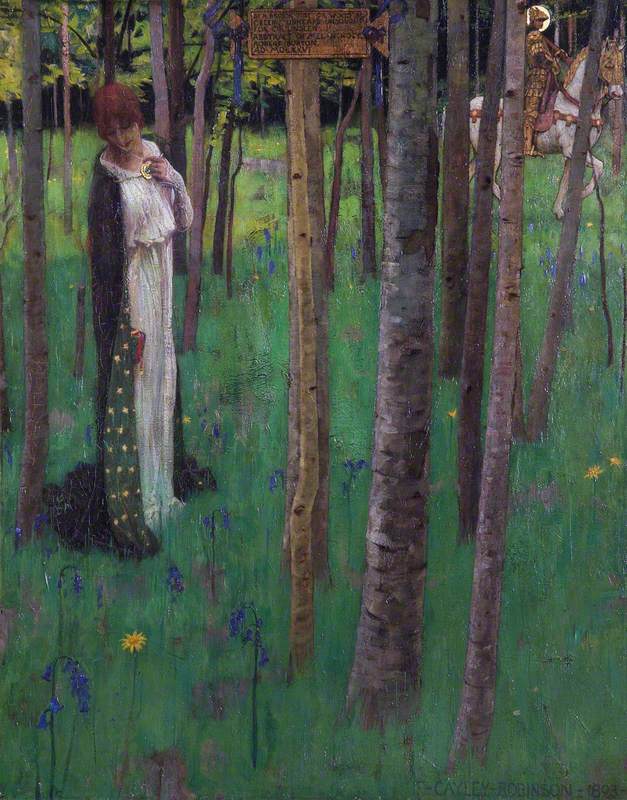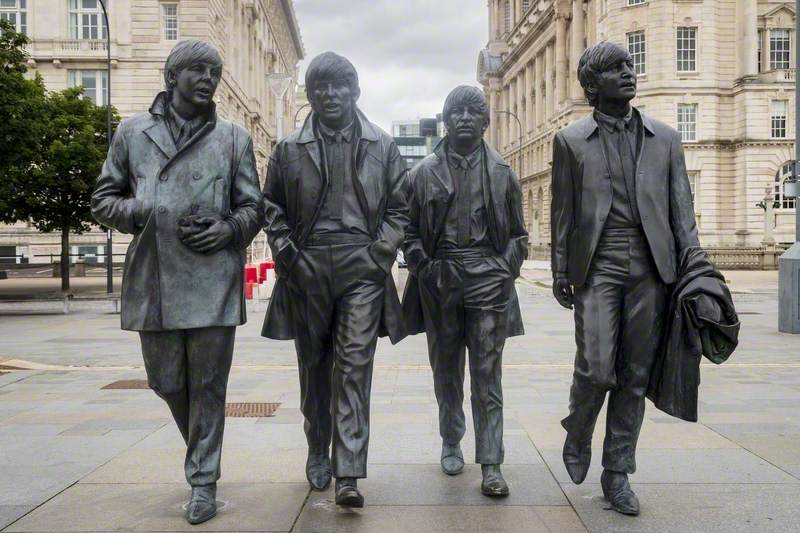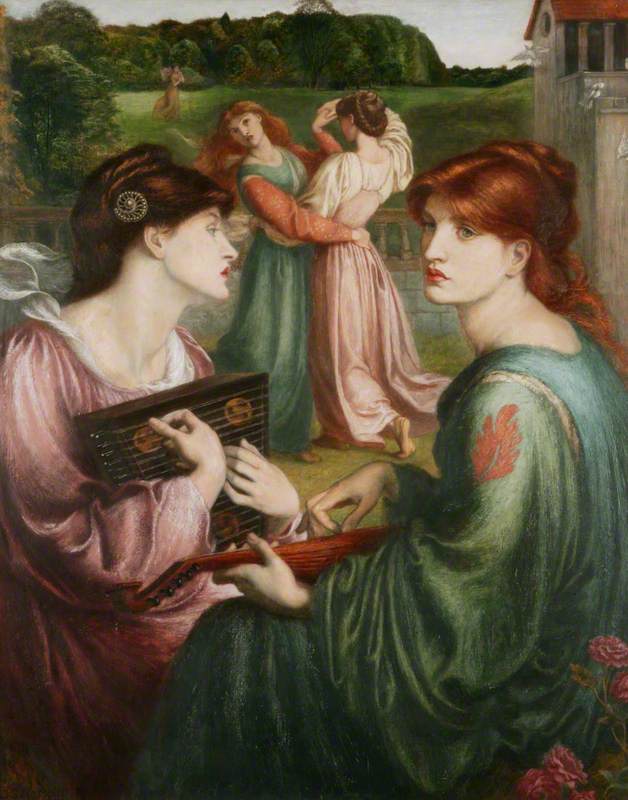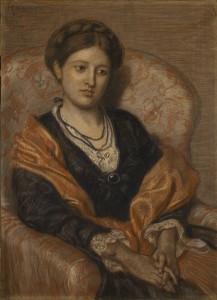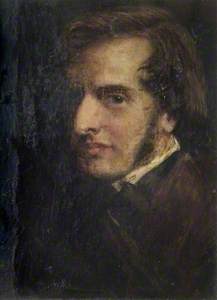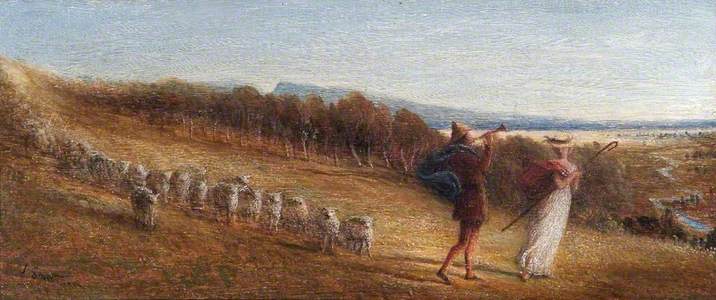James Smetham (1821–1889) was an artist, poet and teacher. A friend of Daniel Gabriel Rossetti, John Ruskin, William Davies (who would later edit Smetham's poems and letters) and others in Pre-Raphaelite circles, Smetham's artistic style shares certain characteristics with his better-known contemporaries.
What set Smetham apart from many of his Pre-Raphaelite peers, however, was his devout religious faith. He came from a strongly Methodist family in Yorkshire – his father, uncle, and brother were all Wesleyan ministers.
Smetham met his wife, Sarah (née Goble), in 1854 when they were both employed at the Wesleyan Normal Institute in Westminster, and he later led a Bible Class in Stoke Newington.
His beliefs were fundamental to his life and art.
Early works
'I was thus thrown on the world by my own act and deed and with very little practice announced myself in Shropshire as a portrait painter getting employment at once; working when I wanted money' – (Smetham to Ruskin, 16th November 1854)
Portraiture was Smetham's gateway to life as a commercial artist. After first serving an apprenticeship as a draughtsman with an architect in Lincoln, in the 1840s he established himself as a wandering portraitist travelling the country in search of work. Many of his early clients were family and friends.
Reverend James Smetham (c.1793–1847), the Artist's Father
1840s
James Smetham (1821–1889) 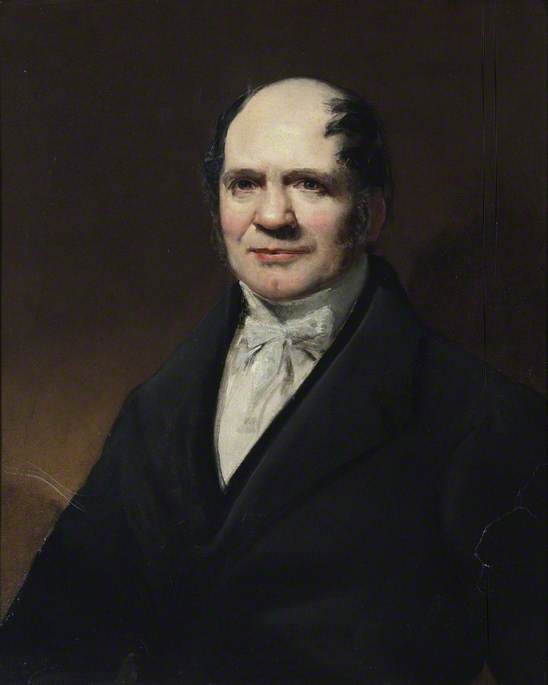
This proved to be an unreliable source of income. The growing availability of photography caused the demand for portraiture to dwindle – an early setback to Smetham's burgeoning artistic career.
Natural idylls
'The beauty of nature is a gentle and soothing influence when the sense of reconciliation with the great God of nature is fixed in the soul' – (Smetham to his wife, Sarah, 3rd August 1863)
The emergence of Romanticism as a response to industrialisation encouraged a growing reverence for the representation of nature in art, in contrast to the established taste for classical imagery and history painting.
A Quiet Meadow (Eastbourne, East Sussex)
1854
James Smetham (1821–1889) 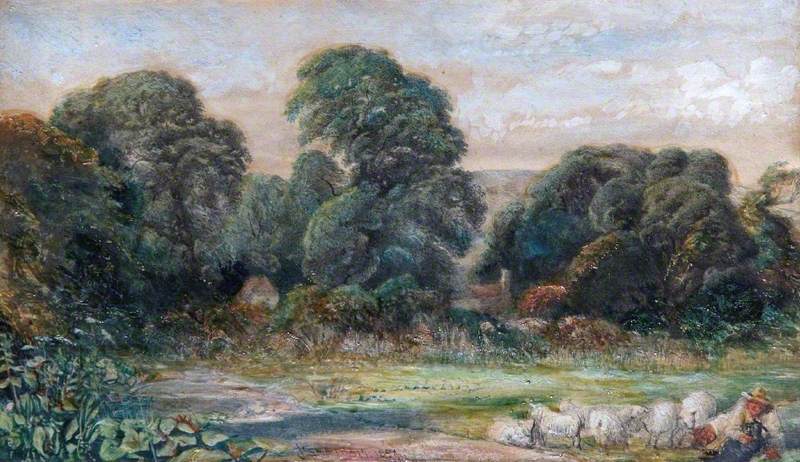
Following these principles, Smetham found inspiration in the natural world. The English countryside provided endless subject matter as he sought to capture the essence and beauty of his surroundings.
Engagement with nature was also an avenue through which Smetham explored his own inward experiences and religious faith.
Hugh Miller Watching for His Father's Vessel
1866
James Smetham (1821–1889) 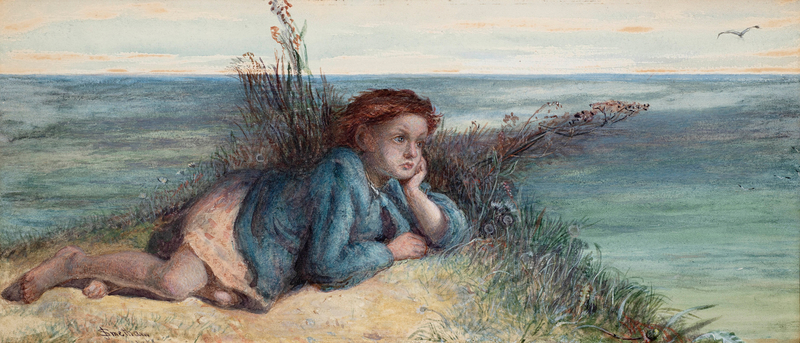
Pre-Raphaelite outsider
'I had better tell you frankly at once that I have no such faith as you have' – (Dante Gabriel Rossetti to Smetham, 10th December 1865)
Smetham was friends with a number of leading Pre-Raphaelites, especially Dante Gabriel Rossetti, and produced well-regarded works such as The Mandolin (1866) in Rossetti's studio. He once remarked that 'Rossetti has done me more artistic good than all other art influences put together.'
Woman with a Tambourine (Irene with a Tambourine)
c.1864–1868
James Smetham (1821–1889) 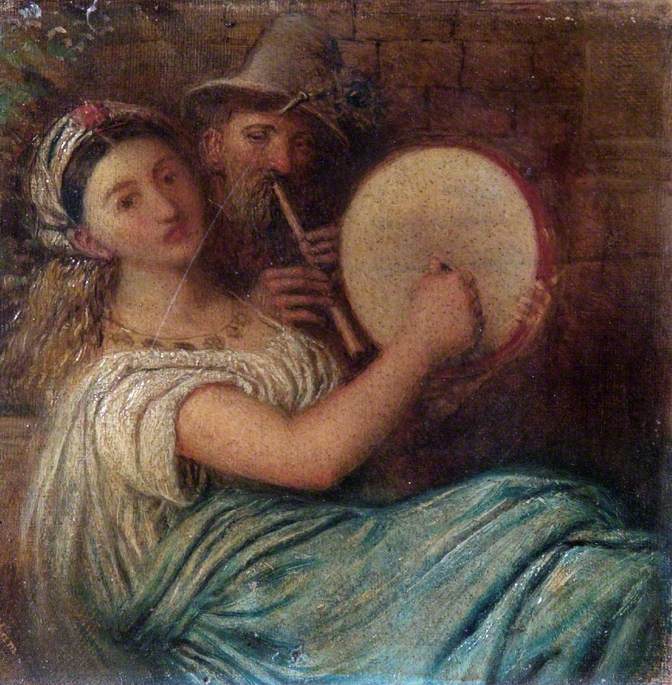
A point on which they differed, however, was religion. Smetham's staunch Methodist faith set him apart from his bohemian peers, and he was discomfited by behaviour that did not align with his religious beliefs.
Despite being well-regarded by his contemporaries, Smetham's artistic output was never consistently commercially viable, and his family were often racked with financial difficulties. The income from Sarah's teaching was especially important when Smetham was ill and unable to work.
Decline and later years
'He received every care and attention and for more than eight years every comfort possible to him until on 5th February 1889 he passed quietly from the gloom of earth into the light of the Father's presence' – (Sarah Smetham's family reminiscences)
Prone to mental health struggles throughout his life, Smetham eventually suffered a final collapse in 1877, and produced no further artworks in the last twelve years of his life, which he spent confined to mental asylums or his bedroom.
Dante Gabriel Rossetti and others organised an exhibition and sale of his paintings. It was a mark of mutual affection and respect.
During this period Smetham stopped painting, barely spoke, and had difficulty taking food.
As his condition worsened he received treatment in asylums, before long-term lodgings were found that could meet his needs. Smetham died on 5th February 1889, aged 68.
A Pilgrim at Stonehenge
c.1875
James Smetham (1821–1889) 
Legacy
For the remainder of her life, Sarah Smetham dedicated herself to promoting and preserving the work and legacy of her husband: binding together his 'Bible Studies', compiling volumes of their 'Letters and Reminiscences', and publishing his 'Letters', 'Literary Works', and 'Poems' with William Davies.
Smetham's friends worked to sell the remainder of his artworks, with many notable nineteenth-century Methodists recorded as buyers. These funds, alongside her small income from teaching, and the benevolence of friends and family, supported Sarah and their children.
Sarah Smetham and Baby John
1855
James Smetham (1821–1889) 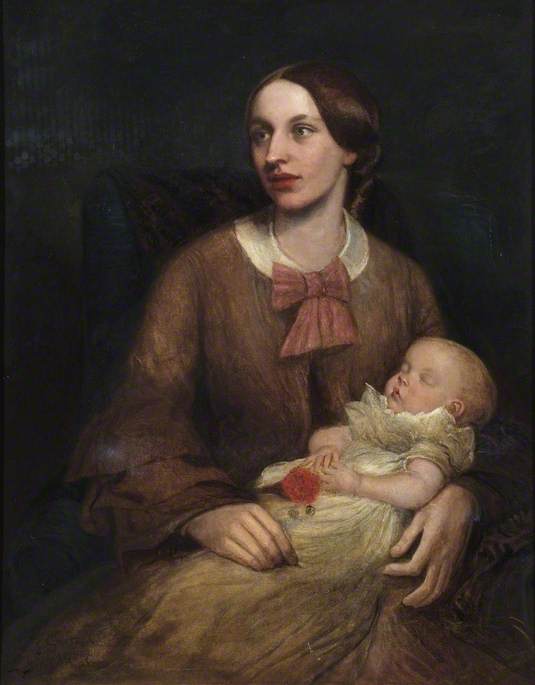
Sarah Smetham died in December 1912, and was buried alongside her husband in Highgate Cemetery. Their grave, now also the final resting place for their son, grandson, and grandson's wife, bears a reminder of their Methodist faith, a quote from Psalm 17:15 – 'I shall be satisfied when I awake with thy likeness.'
The work of James Smetham, undervalued during his life, remains relatively unknown. Following his death, there has been only one major exhibition of his work, at the Yale Center for British Art in 1996. Written material primarily focussing on James is also sparse. Although examples of Smetham's artworks belong to several major galleries and museums in Britain, his work has rarely featured in explorations of nineteenth-century art – celebrating the Pre-Raphaelites or otherwise.
Knights and Maiden on Horseback
James Smetham (1821–1889) (attributed to) 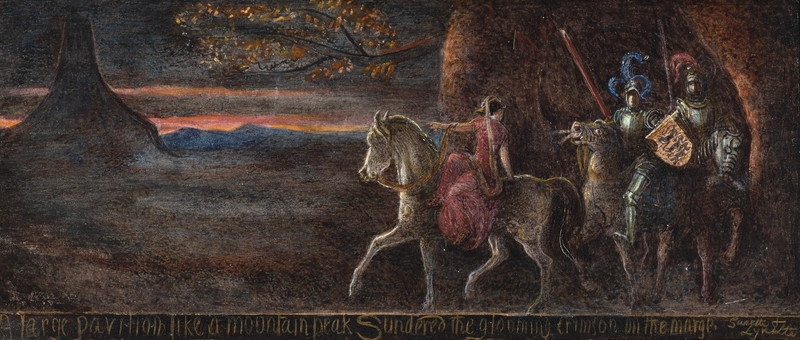
'Pre-Raphaelite Outsider: James Smetham (1821–1889)' therefore, represents the first exhibition of Smetham's art this century, and only the second such display since those works were created almost 200 years ago.
'Pre-Raphaelite Outsider: James Smetham (1821–1889)' is curated by the Oxford Centre for Methodism and Church History at Oxford Brookes University. It can be viewed in person at Bewdley Museum between 9th September and 29th October, or virtually in the Centre's new Bloomberg Connects guide.
Thomas Dobson, Collections and Digitisation Officer, and Dr Daniel Reed, Public Engagement Manager & Research Fellow at the Oxford Centre for Methodism and Church History
This article was based on text by Lizzie Barratt
